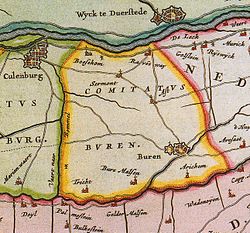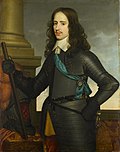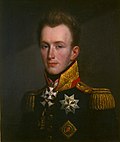This article needs additional citations for verification .(November 2025) |
County of Buren Graafschap Buren(nl) | |||||||||
|---|---|---|---|---|---|---|---|---|---|
| c. 994–1795 | |||||||||
 Map of the County of Buren around 1665, County of Buren highlighted in yellow | |||||||||
| Status | County | ||||||||
| Capital | Buren | ||||||||
| Common languages | Dutch | ||||||||
| Historical era | Middle Ages, Renaissance | ||||||||
• Established | (994) 1498 | ||||||||
• Disestablished | 1795 | ||||||||
| |||||||||
The Buren County was a territory situated in what is now the Dutch province of Gelderland.
Contents
- Lordship of Buren
- County
- List of the counts of Buren and Leerdam
- House of Egmont
- House of Orange-Nassau
- See also
- References
It was an independent county[ clarification needed - when did it become independent from the HRE?] until the establishment of the Batavian Republic in 1795. Although it was not formally part of the United Provinces, in practice it was governed by it.



















